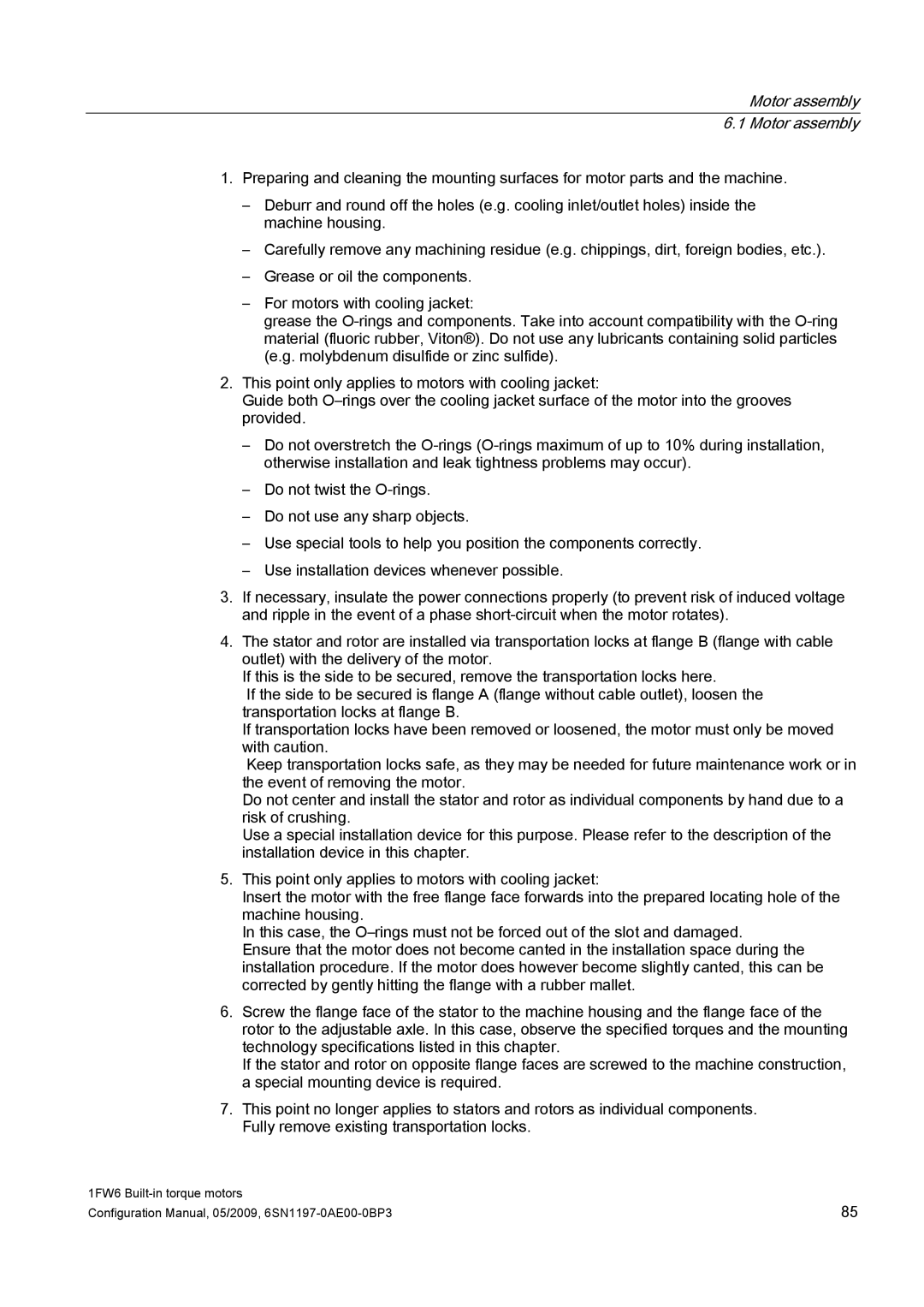Motor assembly
6.1 Motor assembly
1.Preparing and cleaning the mounting surfaces for motor parts and the machine.
–Deburr and round off the holes (e.g. cooling inlet/outlet holes) inside the machine housing.
–Carefully remove any machining residue (e.g. chippings, dirt, foreign bodies, etc.).
–Grease or oil the components.
–For motors with cooling jacket:
grease the
2.This point only applies to motors with cooling jacket:
Guide both
–Do not overstretch the
–Do not twist the
–Do not use any sharp objects.
–Use special tools to help you position the components correctly.
–Use installation devices whenever possible.
3.If necessary, insulate the power connections properly (to prevent risk of induced voltage and ripple in the event of a phase
4.The stator and rotor are installed via transportation locks at flange B (flange with cable outlet) with the delivery of the motor.
If this is the side to be secured, remove the transportation locks here.
If the side to be secured is flange A (flange without cable outlet), loosen the transportation locks at flange B.
If transportation locks have been removed or loosened, the motor must only be moved with caution.
Keep transportation locks safe, as they may be needed for future maintenance work or in the event of removing the motor.
Do not center and install the stator and rotor as individual components by hand due to a risk of crushing.
Use a special installation device for this purpose. Please refer to the description of the installation device in this chapter.
5.This point only applies to motors with cooling jacket:
Insert the motor with the free flange face forwards into the prepared locating hole of the machine housing.
In this case, the
Ensure that the motor does not become canted in the installation space during the installation procedure. If the motor does however become slightly canted, this can be corrected by gently hitting the flange with a rubber mallet.
6.Screw the flange face of the stator to the machine housing and the flange face of the rotor to the adjustable axle. In this case, observe the specified torques and the mounting technology specifications listed in this chapter.
If the stator and rotor on opposite flange faces are screwed to the machine construction, a special mounting device is required.
7.This point no longer applies to stators and rotors as individual components. Fully remove existing transportation locks.
1FW6 | 85 |
Configuration Manual, 05/2009, |
